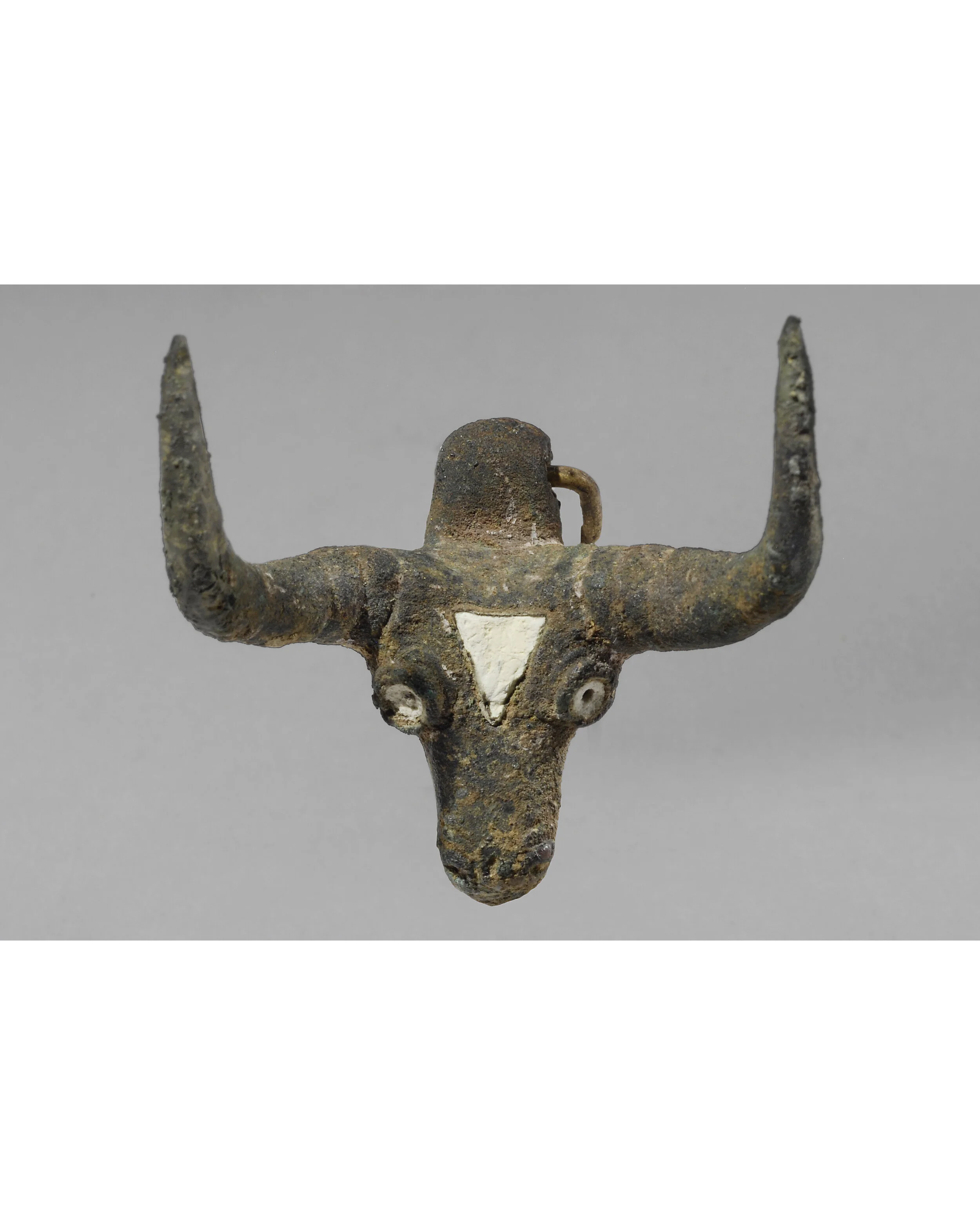Ancient Assyrian Chalcedony Bull Pendant
Ancient Assyrian Chalcedony Bull Pendant
Assyrian, 6th century B.C.
Chalcedony
H: 2.2 cm
PROVENANCE
Ex- Leo Mildenberg (1913-2001) collection, Switzerland.
PUBLISHED
KOZLOFF A. (ed.), Animals in Ancient Art from the L. Mildenberg Collection, Cleveland, 1981, n. 28, p. 40;
Phoenix Ancient Art Catalogue 2017 no.1 , No. 21
Serial NO: 18820
The cylindrical hole pierced between the forefeet and the tail of this pendant was probably used to string it as a simple bead on a necklace rather than as an amulet (suspended from a string, the animal’s head would be turned downward) : it is almost intact, but the tip of the horn is lost.
The animal is seated on a small, thin rectangular base with the four legs folded up under his body in a perfectly natural pose, which contrasts with the style adopted by the carver. Perhaps because of the hardness of the stone, only the general forms are modeled (curve of the back, shoulders, thighs, ears), while the other details are rendered in a very stylized way with incisions or small ridges (legs, hooves). Incisions on the back and hatching on the flanks could indicate the fur of the animal. The head is triangular, the muzzle linear; the jaw is not marked, nor are the nostrils. As in the first phases of Urartian art, the eyes are not engraved.
In spite of reduced size and simple shape, this pendant attracts the modern eye, probably because of its elegance and the quality of the stone. This figurine can be compared with an amulet in lapis lazuli, now at the Walters Art Gallery in Baltimore, which is treated in a more naturalistic manner. The animal’s posture also recalls one that was often adopted by Persian artists when they represented sitting bovids, as on the monumental bull capitals of the large palaces of the Achaemenid kings (Persepolis, Susa).
BIBLIOGRAPHY
SCHMANDT-BESSERAT D., Ancient Persia: The Art of an Empire, Austin (Texas), 1978, p. 73, n. 85.
Susa and Persepolis capitals:
POPE A.U., A Survey of Persian Art, From Prehistoric Times to the Present, Vol. IV, Oxford, 1938, pl. 101.
TRÜMPELMANN L., Persepolis, Ein Weltwinder der Antike, Mainz on Rhine, 1988, p. 25, 17.










